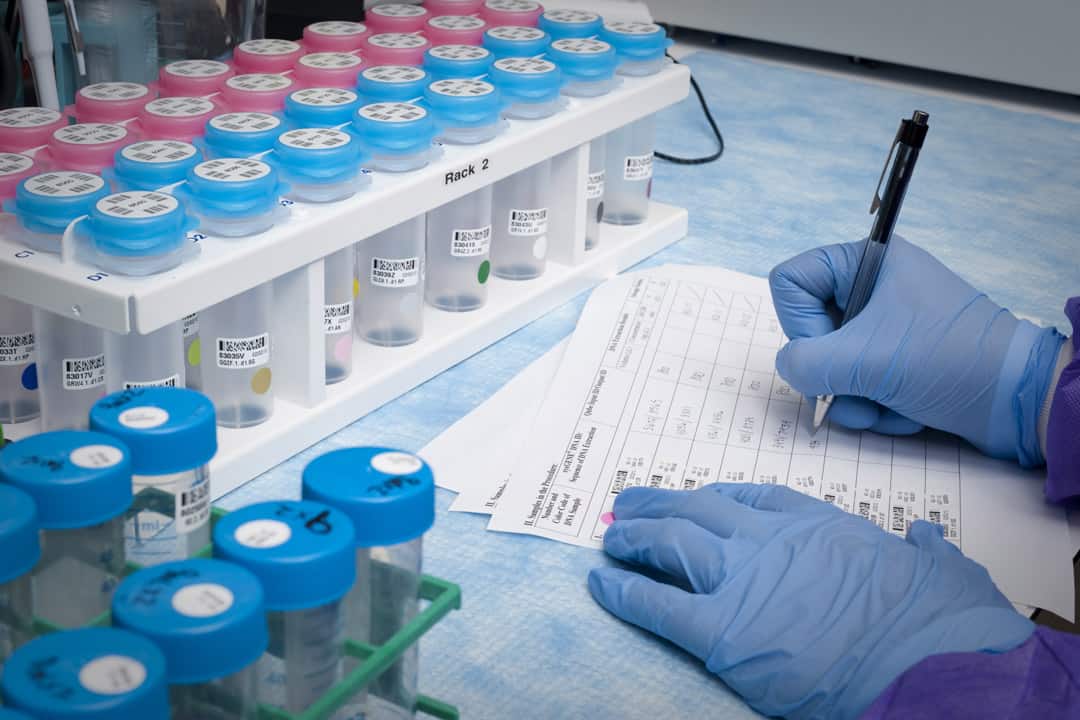Former U of T researcher Abdelahhad Barbour and U of T professor Michael Glogauer in the Faculty of Dentistry have recently discovered a new class of lantibiotics named salivaricin 10 (SALI-10) that could alleviate unnecessary inflammation and enhance pathogen elimination through various mechanisms.
Lantibiotics are strings of amino acids produced by bacteria and modified after protein synthesis in a process known as posttranslational modification; they generally have anti-microbial properties. In the study, the researchers set out to uncover mouth-residing bacteria with properties that can promote a healthy microbial environment. The study’s findings highlight the strong potential SALI-10 proteins have in promoting healthy oral bacteria. SALI-10 proteins are a class of lantibiotics produced solely in the mouth by Streptococcus salivarius (S. salivarius) bacteria.
As co-founders of a U of T oral health sciences startup dedicated to probiotic innovation, Barbour and Glogauer research molecules with antimicrobial properties that have the potential for oral pathogen elimination.
By working with S. salivarius, they were able to study the mechanisms SALI-10 proteins employ to impact immune function and aspects of the protein’s structure that are responsible for its ability to selectively target pathogens.
A pioneer in mouth and gut health
The oral microbiome is a collection of various microorganisms that reside in our oral cavity and contribute to our oral and overall health.
The diversity of microorganisms in the oral microbiome increases gradually over time, with the adult mouth typically hosting over 200 bacterial species. There are over 600 species commonly identified in the adult human population. Streptococcus is one of the main microorganisms in this complex community, and it has been detected in humans as young as four months of age.
As one of the first bacteria to reside in human oral and intestinal environments, S. salivarius — a type of Streptococcus — is important for balancing the colonization of “good” and “bad” bacteria.
S. salivarius’ anti-inflammatory properties can be attributed to its ability to inhibit a signalling pathway whose activation promotes inflammation. S. salivarius’ anti-inflammatory properties allow it to turn off inflammatory responses in the gut, suggesting a potential therapy for gastrointestinal conditions involving inflammation.
One strain of S. salivarius, called JH, also targets oral disease-causing strains of bacteria, such as S. mutans and S. sobrinus, which are both associated with an infectious disease causing tooth decay known as dental caries. This ability to target harmful bacteria is a probiotic property. By further evaluating the probiotic potential of various S. salivarius strains, researchers can better determine oral drug contenders for preventing and treating oral infectious diseases.
Multilevel protection
In the study, Barbour and Glogauer also found that SALI-10 proteins possess an important structural difference compared to other lantibiotics: they’re phosphorylated, which means they are tagged with chemical compounds called phosphates. This phosphorylation occurs after the formation of the SALI-10 protein, and it plays a vital role in the protein’s ability to induce immune responses.
In the study, SALI-10 proteins were able to prime neutrophils, which are immune cells that are the first line of defense in the inflammatory response. This process increases the expression of specific markers on neutrophils that are involved in promoting their function, which activates the appropriate immune cells and causes them to engulf local pathogens.
Not only do SALI-10 proteins target oral pathogens, but they also suppress the collateral inflammation that results from protective immune responses. Barbour and Glogauer observed that SALI-10 proteins trigger various oral anti-inflammatory responses in mice.
Further, Barbour and Glogauer found that by enhancing a separate process of pathogen destruction known as phagocytosis, SALI-10 proteins promote better pathogen elimination and subsequently halt inflammatory responses. As further evidence of their anti-inflammatory properties, SALI-10 proteins suppress proinflammatory cells while upregulating anti-inflammatory ones by targeting important biomarkers on both types of cells.
Aside from their anti-inflammatory influence, SALI-10 proteins also possess antibiofilm properties, which are responsible for disrupting oral disease-causing pathogens.
The researchers’ proposed model of oral protection mediated by SALI-10 suggests that these proteins can directly penetrate oral pathogen biofilms — which act as a layer of protection for the pathogen — and disrupt their membranes, preventing pathogen colonization. This process targets disease-causing bacteria while maintaining beneficial oral microbes, thus enhancing a healthy and balanced microbial environment.
The future of SALI-10
All of these beneficial traits from this previously unidentified class of lantibiotics support its candidacy for promoting oral health.
SALI-10’s ability to perform all of these various biological activities — phagocytosis upregulation via neutrophil priming, anti-inflammatory influence, and biofilm disruption — allows it to offer protection against infection at multiple levels.
SALI-10’s ability to target pathogens while maintaining colonies of important beneficial bacteria is also a highly desirable feature that supports its potential clinical use. Its selectivity in disrupting pathogens while leaving beneficial microbes intact suggests it could be a potential alternative to broad-spectrum antibiotics, which disrupt both pathogens and beneficial bacteria alike.
This research establishes SALI-10’s efficacy in a clinical context to support new biotherapeutic developments. These findings are also foundational for future studies investigating the role of phosphorylated lantibiotics in different microbial environments, and their ability to contribute to health on a wider scale.



No comments to display.